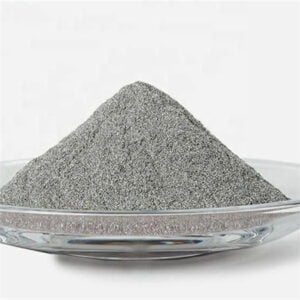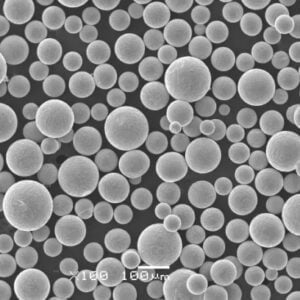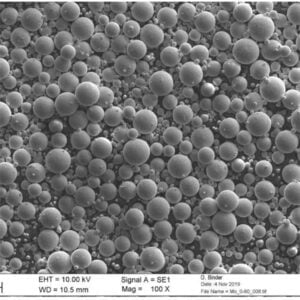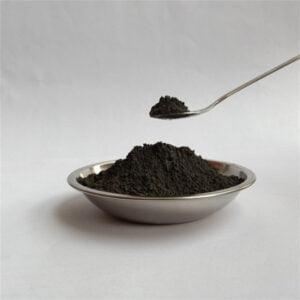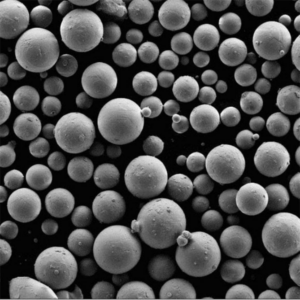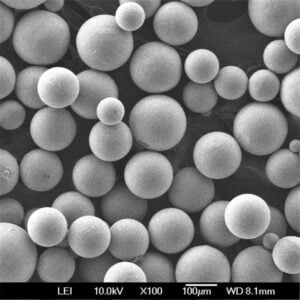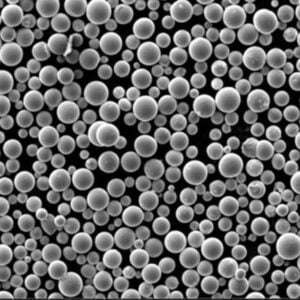
18Ni300 Powder: The Ultimate Guide for 2025
Low MOQ
Provide low minimum order quantity to meet different needs.
OEM & ODM
Provide customized products and design services to meet unique customer needs.
Adequate Stock
Ensure fast order processing and provide reliable and efficient service.
Customer Satisfaction
Provide high quality products with customer satisfaction at the core.
share this article
Table of Contents
Overview
18Ni300 powder, also known as Maraging Steel 300, is a high-strength, ultra-tough, and low-carbon iron-nickel alloy used extensively in critical applications like aerospace, tooling, automotive, and defense. Due to its excellent mechanical properties, ease of heat treatment, and superior printability in 3D printing, it is a top choice for manufacturing high-performance components.
In this comprehensive guide, we’ll explore:
- Best 18Ni300 powder for 3D printing
- How to choose the right 18Ni300 powder
- Top suppliers of 18Ni300 powder
- Properties and applications in various industries
- Production methods and cost analysis
- Comparing gas atomized vs. water atomized 18Ni300 powder
Best 18Ni300 Powder for 3D Printing in 2025
Why 18Ni300 Powder is Ideal for Additive Manufacturing?
- High strength & toughness after heat treatment
- Excellent weldability & printability in LPBF & DED
- Minimal distortion and cracking risk
- Good wear resistance, making it perfect for tooling applications
Key Factors for Selecting 18Ni300 Powder for 3D Printing
- High sphericity for better flowability
- Controlled particle size distribution for consistent layer formation
- Low oxygen & impurity levels to prevent defects
- Superior mechanical properties post-heat treatment
Comparison for Different 3D Printing Technologies
| 3D Printing Technology | Recommended 18Ni300 Powder | Advantages | Challenges |
|---|---|---|---|
| Laser Powder Bed Fusion (LPBF) | Gas-atomized spherical powder (15-45µm) | High accuracy, fine details | Requires optimized laser settings |
| Electron Beam Melting (EBM) | Gas-atomized powder (45-105µm) | Low residual stress | Limited material availability |
| Direct Energy Deposition (DED) | Gas-atomized powder (50-150µm) | Large-scale part production | Requires post-processing |
| Binder Jetting | Irregular or spherical powder (30-80µm) | High-speed production | Requires sintering & infiltration |
For high-performance industrial applications, Met3DP’s gas-atomized 18Ni300 powder is the preferred choice. Learn more about Met3DP’s high-quality metal powders.
How to Choose the Right 18Ni300 Powder
Selecting the ideal 18Ni300 powder requires considering factors like particle size distribution, powder morphology, atomization process, and application requirements.
1. Particle Size Distribution (PSD)
- Fine powders (15-45µm) → Best for Laser Powder Bed Fusion (LPBF)
- Medium powders (45-105µm) → Suitable for EBM & Binder Jetting
- Coarse powders (50-150µm) → Used in Direct Energy Deposition (DED)
2. Powder Morphology
- Spherical Powder → Best for 3D printing due to superior flowability
- Irregular Powder → Suitable for Binder Jetting & Sintering
3. Atomization Process
- Gas-Atomized Powder → High purity, excellent flowability, best for 3D printing
- Water-Atomized Powder → More affordable, irregular shape, best for sintering & MIM
Comparison of Different Types
| Factor | Gas Atomized | Water Atomized |
|---|---|---|
| Sphericity | High | Low |
| Purity | High | Medium |
| Flowability | Excellent | Moderate |
| Cost | Medium | Low |
| Best for | 3D Printing, Aerospace | MIM, Sintering |
For high-precision 3D printing, Met3DP’s gas-atomized 18Ni300 powder is the best choice. Contact Met3DP for more details.
Related Products
Top Suppliers in 2025
Several global manufacturers produce high-quality 18Ni300 powder, but not all powders meet the stringent additive manufacturing requirements.
Leading Suppliers and Their Offerings
| Supplier | Location | Powder Type | Specialization |
|---|---|---|---|
| Met3DP | China | Gas-atomized 18Ni300 | High-performance AM powders |
| Höganäs | Sweden | Water-atomized | Sintering & MIM applications |
| Carpenter Additive | USA | Gas-atomized | Aerospace & defense |
| Sandvik | Sweden | Gas-atomized | Tooling & industrial applications |
| AMETEK | USA | Plasma-atomized | High-purity applications |
Among these, Met3DP stands out due to its cutting-edge atomization technology and consistent powder quality. Explore Met3DP’s 18Ni300 product range.
Properties
Key Physical and Chemical Properties
| Property | Value |
|---|---|
| Composition | Fe-18Ni-9Co-5Mo-0.7Ti |
| Density | 8 g/cm³ |
| Melting Point | 1413°C |
| Hardness (After Aging) | 50-55 HRC |
| Ultimate Tensile Strength | 2000 MPa |
| Yield Strength | 1800 MPa |
| Elongation | 9-12% |
These outstanding properties make 18Ni300 powder the material of choice for high-strength applications such as aerospace structural parts, injection molds, and industrial tooling.
Applications in Industry
18Ni300’s combination of high strength, toughness, and wear resistance makes it suitable for a wide range of applications.
Key Industrial Applications
| Industry | Application | Why 18Ni300? |
|---|---|---|
| Aerospace | Landing gears, structural parts | High strength, fatigue resistance |
| Tooling & Molds | Injection molds, die casting | Excellent wear resistance |
| Automotive | High-performance gears | Toughness & durability |
| Defense | Missile components, armor | Superior impact resistance |
| Medical | Surgical tools | Biocompatibility & strength |
For industries requiring ultra-high-strength components, it is a trusted choice.
Production Methods
The quality and performance of 18Ni300 powder depend on the production method used. The method affects particle shape, purity, flowability, and suitability for different applications, particularly additive manufacturing (AM), metal injection molding (MIM), and sintering.
Key Production Methods and Their Characteristics
| Production Method | Particle Shape | Purity | Best Applications | Cost |
|---|---|---|---|---|
| Gas Atomization | Spherical | High | 3D printing, aerospace | Medium |
| Water Atomization | Irregular | Medium | MIM, sintering | Low |
| Plasma Rotating Electrode Process (PREP) | Spherical | Ultra-high | High-end aerospace & medical | Very High |
1. Gas Atomization
- Process: High-pressure inert gas (argon/nitrogen) rapidly cools molten metal into fine spherical powders.
- Advantages:
- High sphericity (ideal for 3D printing)
- Low oxygen content (prevents oxidation)
- Uniform particle distribution (better layer adhesion)
- Best for: LPBF, EBM, DED
2. Water Atomization
- Process: High-pressure water jets break down molten metal into fine particles.
- Advantages:
- Lower cost compared to gas atomization
- Higher surface area (good for sintering & MIM)
- Disadvantages:
- Irregular particle shape (poor flowability for AM)
- Higher oxygen content (can affect mechanical properties)
- Best for: MIM, sintering
3. Plasma Rotating Electrode Process (PREP)
- Process: A rotating electrode of 18Ni300 is melted in a plasma environment, forming ultra-pure spherical powder.
- Advantages:
- Extremely high purity
- Perfectly spherical particles
- Superior flowability
- Disadvantages:
- Expensive
- Limited production volume
- Best for: High-end aerospace, medical, and critical applications
For high-performance 3D printing applications, Met3DP’s gas-atomized 18Ni300 powder offers superior quality. Explore Met3DP’s powder production capabilities.
Cost Analysis in 2025
The cost of 18Ni300 powder depends on several factors, including production method, atomization process, particle size, and market demand.
Factors Affecting Cost
- Production Method – PREP powders are more expensive than gas or water-atomized powders.
- Particle Shape – Spherical powders (better for AM) are more expensive than irregular powders.
- Purity – Higher purity = Higher cost.
- Market Demand – Demand in aerospace, defense, and tooling industries affects prices.
Estimated Price Ranges for Different Types
| Powder Type | Price (USD/kg) | Best For |
|---|---|---|
| Gas-Atomized 18Ni300 Powder | 90−90 – 90−170 | 3D Printing, Aerospace |
| Water-Atomized 18Ni300 Powder | 50−50 – 50−100 | MIM, Sintering |
| PREP 18Ni300 Powder | 250−250 – 250−400 | High-Performance AM |
For cost-effective, high-quality 18Ni300 powder, Met3DP provides optimized solutions tailored to industry needs. Contact Met3DP for pricing and availability.
Gas Atomized vs. Water Atomized vs. PREP: Which is Better?
Choosing the right 18Ni300 powder depends on the intended application.
Comparison of Different Atomization Methods
| Feature | Gas Atomized | Water Atomized | PREP |
|---|---|---|---|
| Particle Shape | Spherical | Irregular | Highly Spherical |
| Flowability | Excellent | Moderate | Outstanding |
| Purity | High | Medium | Very High |
| Cost | Medium | Low | High |
| Best For | 3D Printing, Aerospace | MIM, Sintering | High-End Applications |
For metal additive manufacturing, gas-atomized 18Ni300 powder is the best choice due to its high purity, flowability, and printability.
FAQ
Q1: What is the best 18Ni300 powder for 3D printing?
Gas-atomized spherical 18Ni300 powder is best for LPBF, EBM, and DED due to its excellent flowability and low oxygen content.
Q2: How does heat treatment affect 18Ni300?
After aging, 18Ni300 reaches 2000 MPa tensile strength, significantly improving its hardness and wear resistance.
Q3: Can 18Ni300 be used for injection molding?
Yes, water-atomized 18Ni300 powder is commonly used in Metal Injection Molding (MIM).
Q4: Where can I buy high-quality 18Ni300 powder?
Met3DP is a leading supplier of gas-atomized 18Ni300 powder, optimized for 3D printing and high-performance applications. Contact Met3DP today!
Conclusion
It is a high-strength, tough, and wear-resistant material widely used in aerospace, tooling, automotive, and defense applications. Selecting the right powder type, production method, and supplier is critical for achieving optimal performance and cost-effectiveness.
For industry-leading 18Ni300 powder, Met3DP provides high-purity, spherical powders tailored for demanding applications.
Want to learn more or get a quote? Contact Met3DP today!
Get Latest Price
About Met3DP
Product Category
HOT SALE
CONTACT US
Any questions? Send us message now! We’ll serve your request with a whole team after receiving your message.

Metal Powders for 3D Printing and Additive Manufacturing
COMPANY
PRODUCT
cONTACT INFO
- Qingdao City, Shandong, China
- [email protected]
- [email protected]
- +86 19116340731






